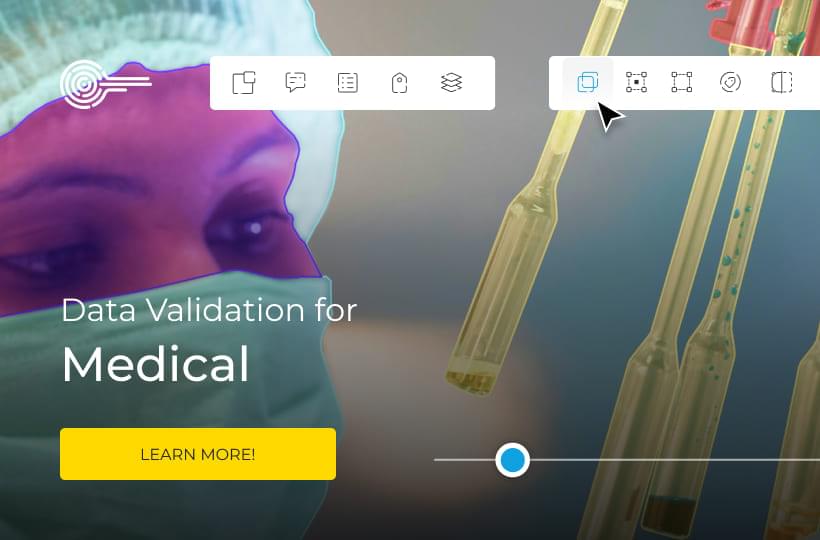Building a Plugin Ecosystem for Your Annotation Platform
Building an ecosystem of plugins for your annotation platform is a strategic approach to improving its functionality and flexibility. This paves the way for innovation and creates a more adaptable system that can evolve with the changing needs of different industries and use cases. As the demand for more specialized tools continues to grow, the ability to extend the platform's capabilities becomes a key differentiator in a competitive environment.
Such an ecosystem provides a way to continuously expand the platform's offerings without major updates or redesigns. Developers and third-party creators can contribute to the ecosystem, adding value to the platform while maintaining its core stability.
Definition and Importance
A plugin ecosystem in the context of an annotation platform refers to a system where additional, independent components called plugins can be developed and integrated into the platform to extend or enhance its capabilities. These plug-ins work as modular units, providing specific functions or capabilities that work seamlessly with the platform's core structure. The ecosystem allows external developers or users to create, share, and implement plugins without changing the platform's fundamental design.
Building a plugin ecosystem is important because it can make an annotation platform more adaptive and scalable. This allows the platform to remain relevant by enabling continuous innovation through community or third-party contributions. Instead of waiting for major updates or releases from the platform vendor, users can quickly implement the tools or features they need.

Key Components
- Plugin architecture. The basic structure that supports the integration of plugins with the platform. It defines how plugins interact with the core system to ensure seamless functionality and compatibility.
- Plugin management system. A centralized system for discovering, installing, updating, and managing plugins. This system ensures users can easily browse available plugins, install them, and manage updates.
- Plugin API. A set of predefined functions and protocols that allow plugins to interact with the core functions of the platform. The API ensures seamless communication between plugins and the core platform system, allowing for customization and expansion.
- Plugin repository or repository. A platform where users can browse and download available plugins. It acts as a marketplace or repository, offering a collection of free or paid plugins, depending on the platform.
- Version control and compatibility testing. A system that ensures plugins are compatible with the current version of the platform. It tracks updates and maintains compatibility, preventing problems when a new platform version is released.
- Plugin development tools and documentation. Resources that enable developers to create plugins. This includes comprehensive documentation, software development kits (SDKs), and debugging tools to help develop new plugins.
- User interface (UI) integration. This system ensures smooth plugin integration with the platform's user interface. It allows users to access and interact with plugins through intuitive UI elements, making the interaction seamless and convenient.
Benefits of a Strong Plugin Ecosystem
- Customization and flexibility. Users can tailor the platform to their unique needs by choosing from various plugins that add specialized features, tools, or integrations. This level of customization ensures that the platform can serve a wide range of industries and use cases.
- Faster innovation and constant updates. With external developers contributing to the ecosystem, new features and tools can be implemented quickly without waiting for major updates from the platform provider. This accelerates innovation and ensures the platform stays current with the latest trends and technologies.
- Reduced development costs. By allowing third-party developers to create plugins, the platform provider does not have to bear the full cost of developing new features. This reduces overall development costs while expanding the platform's capabilities.
- Scalability. The plugin ecosystem allows the platform to scale according to user requirements. As the user base grows or needs evolve, new plugins can be developed and added, allowing the platform to adapt to different industries or changing requirements without a major overhaul.
Designing the Plugin Architecture
Designing a plug-in architecture for an annotation platform requires creating a flexible modular structure that integrates external plugins seamlessly without disrupting the core system. This involves developing a well-defined API that provides access to key platform functions, allowing plugins to perform tasks such as creating annotations, manipulating data, or integrating with other tools. The architecture should also ensure that each plugin operates independently, clearly separating the core system and the plugins, minimizing potential conflicts. A plugin container or framework is essential for managing plugins' loading, initialization, and lifecycle. At the same time, a robust security and permission management system ensures that plugins only access the data and functionality they need.
Effective version control and dependency management are critical to ensuring compatibility between plugins and the core platform system. This lets users easily update or install new plugins without risking system instability. The architecture should also include error handling, logging, and debugging capabilities to identify and resolve plugin performance issues quickly.

Modular Design Principles
Modular design principles are essential to create a flexible and scalable plugin architecture that allows for easy integration and management of external plugins. These principles ensure the system remains maintainable, adaptable, and efficient as the platform evolves. Here are some key modular design principles to consider:
- Loose coupling. The core system and plugins should be loosely coupled and have minimal dependencies. This allows the plugins to work independently, reducing the risk that changes to one component will affect the others. Loose coupling ensures that plugins can be developed, updated, or removed without disrupting the overall functionality of the platform.
- High cohesion. Each plugin should focus on a single, well-defined task or function, ensuring high cohesion within the plugin itself. This makes the plugin easier to understand, maintain, and troubleshoot. A plugin with a clear purpose is more efficient and can be developed and integrated with minimal complexity.
- Interoperability. Plugins should be designed to work together seamlessly, regardless of their purpose. This requires the establishment of clear communication protocols and standards for data exchange between the plugins and the leading platform. By maintaining interoperability, the platform can handle a variety of plugins from different developers, ensuring that they work together without conflict.
- Extensibility. The system should allow for easy expansion with new plugins or features. Extensibility ensures the platform can grow to meet evolving user needs without requiring a complete revision. The modular design encourages adding new features through plugins, providing a flexible and scalable approach to platform development.
- Scalability. A modular system should scale easily in terms of the number of plugins supported and the platform's performance as the plugin ecosystem grows. Scalability ensures that the platform can handle growing demand, whether due to an increase in the number of users, an increase in the number of plugins, or larger data sets, without compromising performance.
Security Protocols
Since plugins often work with access to user data or platform functions, strict security controls are necessary to manage risks such as data leakage, unauthorized access, or malicious behavior. A well-designed security system not only protects users and their data but also builds trust in the ecosystem, encouraging wider adoption and contribution.
The foundation of security in a plugin system includes isolating plugins from the underlying platform and each other, preventing unwanted side effects or security breaches. Permission-based access control is essential, where each plugin must declare what resources it needs (e.g., access to annotations, file systems, or external APIs), and users or administrators can review and approve these permissions.
Testing and Feedback Loops
Because plugins are often developed by third parties, ensuring consistent quality and compatibility requires a structured approach to testing. This typically includes automated unit and integration tests, isolated environments for secure deployment, and validation tools that verify compliance with API standards and security requirements.
Strong feedback between users, developers, and the platform team is important. A built-in mechanism for users to rate, review, and report plugin bugs allows developers to respond quickly to real-world issues. Platforms should also collect usage analytics and bug reports to monitor plugin performance over time.
Maintaining Quality Control
Because plugins can significantly impact a platform's user experience and stability, a formal review and validation process should be in place before any plugin is made publicly available. This may include automatic compatibility checks, performance tests, adherence to API usage guidelines, and vulnerability scans. A manual review process can further ensure that plugins meet best practices in terms of design, functionality, and user interface documentation.
Continuous quality control also includes active monitoring and management. The platform should track plugin performance and usage metrics, eliminate outdated or incompatible plugins, and enforce version control policies that prevent breakdowns during major platform updates. Encouraging developers to make regular updates and providing tools for easy maintenance can keep plugins up to date.
Summary
Building an ecosystem of plugins for an annotation platform is about creating a modular, extensible environment where third-party developers and users can add functionality without disrupting the core system. The strength of such a system lies in its flexibility, which allows the platform to quickly adapt to new needs, integrate external tools, and serve a broader range of use cases across industries.
Generally, a well-built plugin ecosystem transforms an annotation platform from a fixed tool into a dynamic, community-driven solution that can evolve with its users.
FAQ
What is a plugin ecosystem, and why is it essential for our annotation platform?
A plugin ecosystem is a collection of customizable extensions built upon a software's core. It's vital for our platform because it boosts user customization and innovation. This ensures flexibility, scalability, and better performance.
What are the key components of a plugin ecosystem?
The core of a plugin ecosystem includes a modular design and interoperability. These allow for seamless integration and additions without disrupting the core system.
How does a strong plugin ecosystem enhance functionality?
A robust plugin ecosystem extends a platform's capabilities with additional, easy-to-integrate features. Users can pick from various plugins to add specific tools, improving functionality and performance.
What should be considered when designing the plugin architecture?
A modular design is essential when designing the plugin architecture. This ensures plugins operate independently without affecting the core system's stability.
How to maintain quality control in the plugin ecosystem?
Quality control is maintained through thorough reviews, continuous monitoring, and integration of user feedback. This ensures plugins meet standards and evolve based on user input and performance data, maintaining high quality.
